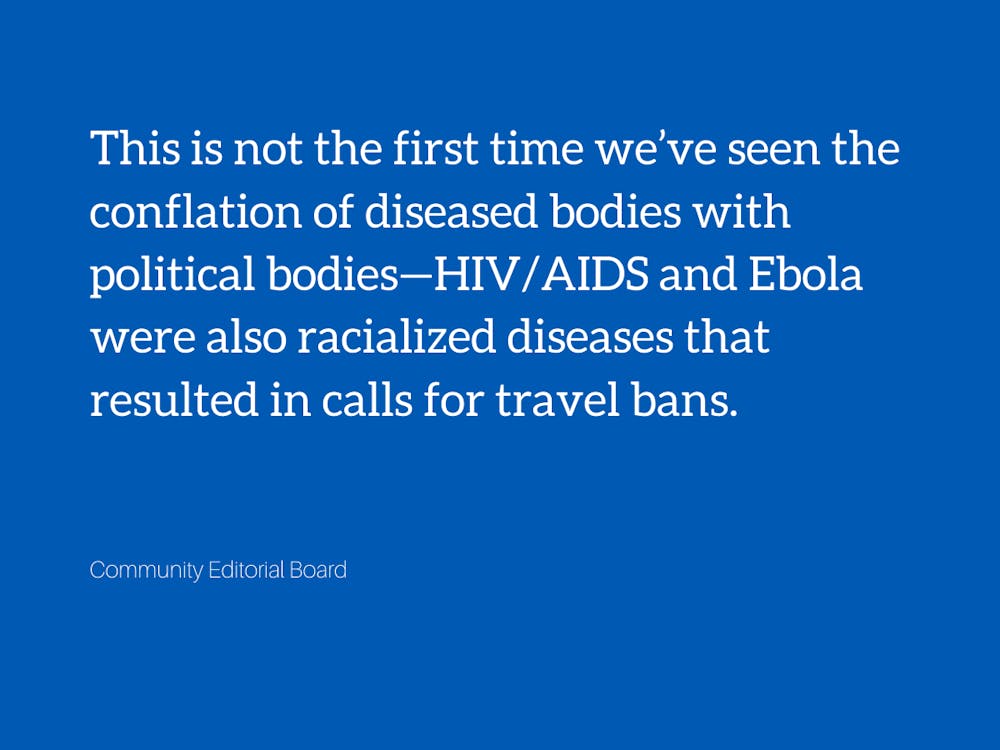On January 23, the RDU airport authority was told that a passenger flying in from JFK had been in Wuhan. They contacted the Centers for Disease Control and Prevention (CDC) about potential exposure to the novel coronavirus. By January 25, the CDC confirmed that the patient tested negative for coronavirus.
Not a single virus, “coronavirus” actually refers to a large family of viruses that can be transmitted from animals to humans. This new strain, COVID-19, was first reported in Wuhan, China at the end of December. Since then, at least 1,113 people have died and about 45,000 have been infected in China as of this past Tuesday. While it quickly received massive attention as a global health emergency and deaths by COVID-19 have now exceeded those from the SARS outbreak in 2003, it still has a very low fatality rate: less than 3%.
With a population of more than one billion people, China has been short on supplies and delayed in running tests for COVID-19. Nevertheless, the Chinese Communist Party (CCP) has made extraordinary efforts to limit the outbreak, including the construction of two hospitals in Wuhan and a mask-making factory in Beijing within a week. Despite these efforts, mainstream U.S. media have weaponized the outbreak and government response to smear the CCP as repressive and authoritarian. As a result, the distinctions between the physical body and the political body are blurred, and the virus becomes essentialized in and synonymous with the Chinese body and the Asian body. This specifically recalls the fearful narrative of the Yellow Peril, a chronic anxiety about how the yellow people of East Asia pose a significant threat against Western power.
Against the advice of global health experts, the U.S. enacted a ban on Chinese travelers that could do more harm than good. This gave a legal green light on racist discrimination as evidenced on social media—clips have been circulating in which Chinese people and their culinary practices are called “gross,” “unclean,” and even deserving of the virus. In Sydney’s Chinatown, a 60-year-old man died from a heart attack, in part because bystanders did not give him CPR for fear of the coronavirus. This is not the first time we’ve seen the conflation of diseased bodies with political bodies—HIV/AIDS and Ebola were also racialized diseases that resulted in calls for travel bans. Altogether, these travel bans have historically been unsuccessful and reinforce the xenophobic perspective of immigrants and foreigners as dirty and contaminated, threatening the sanctity of the U.S.
Internally, some people in the Asian and Chinese diaspora have distanced themselves from their home countries by using some variation of “I haven’t been to China in a long time.” Perhaps this is due to internalized racism and the precarious balancing act between the Model Minority and the Yellow Peril. Regardless, there seems to be a convenient choice: flaunt your culture when it’s cool but discard it when it’s undesirable. This is insulting to the Chinese and Asian families separated from their loved ones and deeply concerned for their safety and wellbeing, especially during Lunar New Year when family is invaluable.
For Duke, the COVID-19 outbreak has been relevant due to the relationship with Duke Kunshan University. Rather than practicing empathy for the disruption in learning and life for fellow students, students have exploited the viral outbreak as opinion fodder to concoct a reactionary, fear-mongering column steeped in Orientalism and Sinophobia. This adds to the rich history of anti-Asian racism at Duke, from Kappa Sigma’s Asia Prime party to the biostatistics department scandal, all of which rely on despicable stereotypes about China and East Asia at large.
Given the escalating panic regarding COVID-19, it is laughable to realize that in the U.S., you are actually more likely to die from the flu than from COVID-19. This season has seen more than 180,000 flu-related hospitalizations and 10,000 deaths in the U.S. alone. Because the flu comes every year, it rarely receives the attention of emerging bugs like COVID-19, even though COVID-19 seems to be a more extreme case of the flu. In both cases, most healthy individuals make full recoveries and seem unlikely to develop a serious illness while fatalities are frequently concentrated in vulnerable populations such as those with weakened immune systems.
This all speaks to the importance of media literacy and paramount need to maintain a critical lens in order to minimize unnecessary and misinformed fear and panic not only regarding public health, but also Sinophobia and racism. Rather than spending our time on dismissive, divisive memes, we cannot stress enough the necessity of practicing basic hand and respiratory hygiene, getting a (FREE) flu shot and exercising empathy instead.
Get The Chronicle straight to your inbox
Sign up for our weekly newsletter. Cancel at any time.

